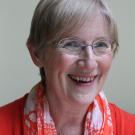This is a collaborative international project which is one of the 18 to be funded by HERA (Humanities in the European Research Area) which will begin work on 30 September 2013. The idea underlying the project is as follows: Two or more European cultures meet whenever a king or prince takes a bride from another country. She often speaks a different language to that of her new court, professes a different version of Christianity, and has been brought up in a different court culture. Transported as she is to her new capital city and court, rarely or never to return home, she can either integrate by changing her beliefs and learning the language and ways of her new territory or she can become a source of friction, retaining an aura of 'foreignness', arousing hostility and even becoming a focus for conspiracy theories. In all cases she effects a transformation by her very presence, for she is usually accompanied by ladies-in-waiting, maids and grooms, often a chaplain, sometimes artists, craftspeople, musicians and actors. She brings with her books, art objects, clothes, jewellery, and furniture, objects that are still to be found in Europe's museums and libraries. If she is interested in opera or theatre, she is often instrumental in establishing these art forms in her new country. She may also bring with her less tangible intellectual baggage too, such as religious, political, philosophical or scientific ideas and influences. The foreign consort often maintains an extensive correspondence with her birth family, which sometimes attempts to direct her actions from afar. If her sisters have also married into foreign courts, the network of transnational communication is further extended. In order to investigate the role of foreign consorts as agents, instruments or catalysts of cultural transfer, a team of scholars from the UK, Germany, Poland and Sweden will work on a number of transnational case studies, covering the period 1500 to 1800. These scholars are: Dr Jill Bepler (Herzog August Bibliothek, Wolfenbüttel), Dr Almut Bues (German Historical Institute, Warsaw), Professor Svante Norrhem (University of Lund, Sweden) and Professor Helen Watanabe-O'Kelly (Oxford University, Project Leader). The team also includes two postdocs: the first postdoc in Oxford, Dr Adam Morton,, now has a permanent position at Newcastle University. He has been succeeded by Dr Ewa Kociszewska. The postdoc in Sweden, Dr Elise Dermineur, now has a tenure-track position there. The project has two PhD students, Urszula Zachara-Zwiazek, one working on Polish dynastic history and Maria Skiba working on music by and for consorts at court. The team has chosen examples that reveal cultural synergies between northern (Denmark, Sweden, Finland, Germany, Britain), eastern (Poland-Lithuania), and southern (Italy, Spain, Portugal) Europe and that enable them to interrogate modern notions of centre and periphery. They are investigating how texts, material culture, music and architecture are interconnected manifestations of the cultural encounters brought about by dynastic marriages and can therefore peel back the map of Europe with its discrete nation states to reveal an earlier one with different linguistic, cultural and political borders to those of today. They are working with colleagues in historic palaces, in museums and in libraries (e.g., Kensington Palace, the Victoria and Albert Museum and the National Portrait Gallery, London; the Royal Armoury, Stockholm, and the Duke August Library, Wolfenbüttel) to consider how it is that certain consorts become embedded in national cultural memory and others do not. Their first book: Queens Consort, Cultural Transfer and European Politics 1550-1750 will appear in 2016 with Routledge, their second Frictions and Failures - Queens Consort and Cultural Encounters in Crisis will appear in the series of the German Historical Institute Warsaw in 2017, and their third Telling Objects - contextualising the role of the consort in early modern Europe with Harrassowitz in 2017.
